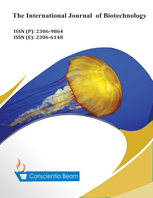Attractiveness of Arthropodal Hexapod Orders to Light-Emitting Diode and Incandescent Bulb Light Colours
DOI:
https://doi.org/10.18488/journal.57.2020.91.1.7Abstract
Dearth of information on response of hexapod orders to light sources and colours informed this study. The study was conducted in Federal University Wukari, Nigeria in the month of May, 2019 to evaluate the attractiveness of hexapod orders to Light-emitting Diode (LED) and Incandescent bulb light colours. Daily sampling using fabricated light traps with 5 different colours (white, yellow, red, green and blued) for each bulb type in 6 replicates was done. A trap with no lighting source was the control. Hexapods collected were sorted into their respective orders. Of the overall 13 insect orders collected, LED bulbs attracted 11 while incandescent, 10. Even though, certain hexapod orders exhibited higher affinity to specific colours, statistical analysis revealed that of the 11 orders from LED, differences in the mean number of insects attracted among the bulb colours was significant (p<0.05) only in Coleoptera and Lepidoptera while for incandescent bulb colours, the mean number of insects attracted was significant for Coleoptera, Lepidoptera, Hemiptera, Hymenoptera, Orthoptera, Mantodea, Odonata and Homoptera. Insect orders generally had higher affinity to white and blue colours. LED bulb colours significantly attracted higher number of insects than their corresponding incandescent colours, except for white on which incandescent was more attractive (p>0.05). Overall, attractiveness to hexapod orders increases with rinsing light intensity and LED bulbs were found to be more attractive to hexapods than do incandescent bulbs. Therefore, LED bulbs of higher light intensity with colours around the blue/white spectrum show potential for use in manipulating hexapods for man’s benefit.

